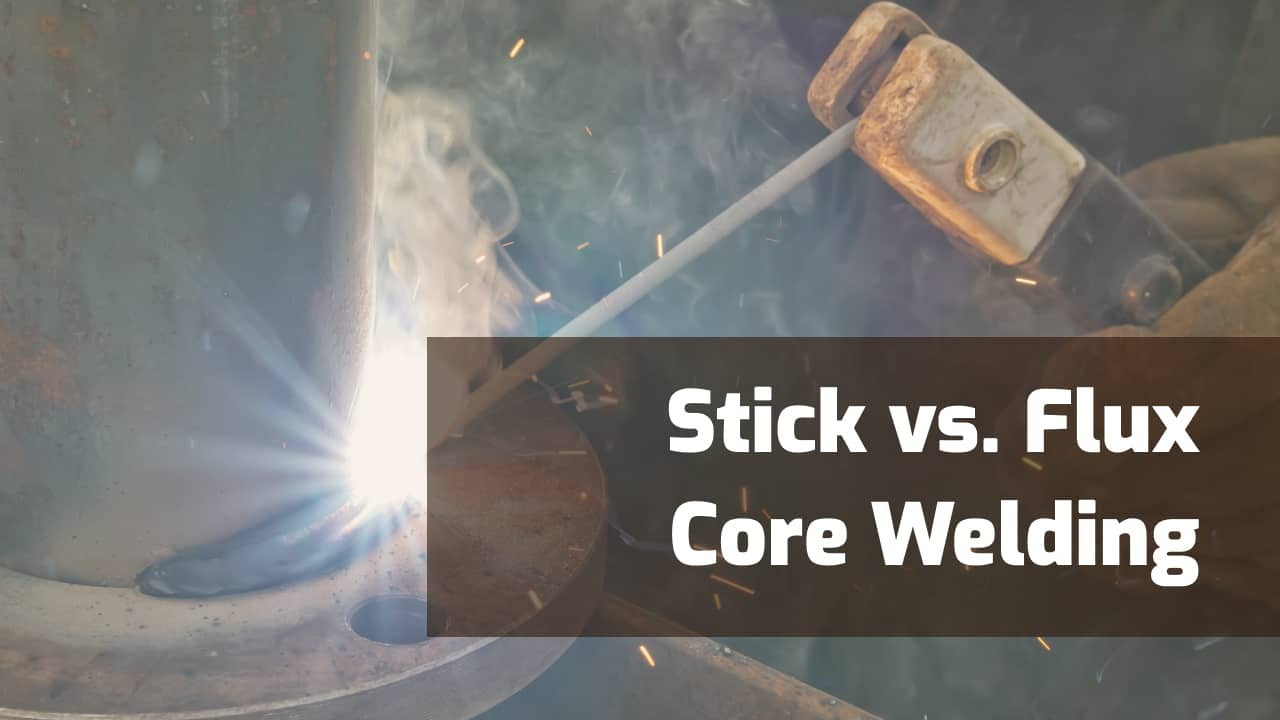Stick welding (shielded metal arc welding) and flux-cored-arc welding (FCAW) differ primarily in their usability and skill level to operate.
Stick welding, with its robustness against wind and ability to handle dirt or rust, is ideal for heavy-duty outdoor projects. Flux-core welding, known for its higher speed and ease of use, is typically used for lighter indoor applications.
Stick welding uses a consumable electrode coated in flux to lay the weld, which provides the shielding gas and conducts electricity. Flux-cored-arc welding (FCAW) uses a tubular wire filled with flux to lay the weld.
These processes also have a lot in common. Both of them are arc-welding processes that provide a self-shielded gas.
That means each uses flux to protect the weld puddle. Neither needs an external gas source to protect the weld from atmospheric contamination.
Each process offers distinct differences that make it better suited for specific situations.
But which one is better for your job? Let’s find out!
Quick Overview of Stick vs. Flux Core
Before we dive into the details, take a look at a side-by-side comparison between stick and flux-core welding:
| Decision Factor | Stick | Flux Core |
|---|---|---|
| Process Type | Manual | Semi-automatic/automatic |
| Skill Level Needed | High | Lower |
| Speed/Productivity | Lower | Higher |
| Portability | High | High |
| Indoor/Outdoor Use | Indoor & Outdoor | Indoor & Outdoor |
| Quality of Weld | Good | Good |
| Welding Positions | All positions | All positions |
| Overall Cost | Lower | Higher |
| Toxic Fumes | High | Higher |
| Weldable Metals | High | High |
| Heat Control | Good | Very Good |
| Puddle Visibility | Good | Good |
| Shielding gas | No | Optional |
Understanding Stick Welding (SMAW)
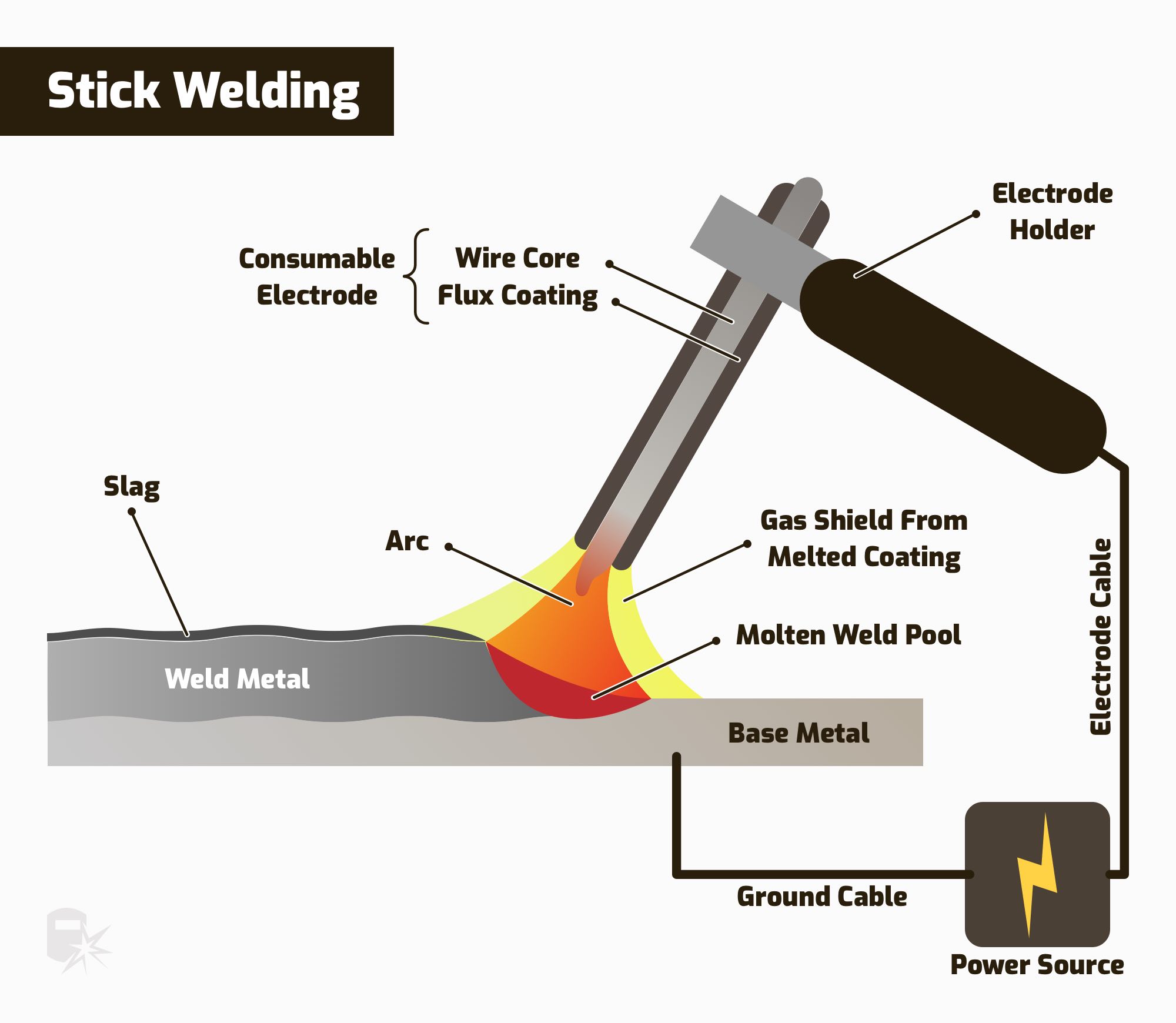
© weldguru.com – Image usage rights
Sometimes, people call stick welding shielded metal arc welding (SMAW). It features a consumable electrode coated in flux.
Stick welding uses an electric arc to join metal. The arc starts between the consumable electrode and the workpiece.
The flux coating melts, forming a protective gas shield around the weld pool. Shielding gas prevents contamination from the surrounding air.
Shielding by flux is where the name “shielded metal arc welding” comes from. The electrode also provides filler metal to the weld joint.
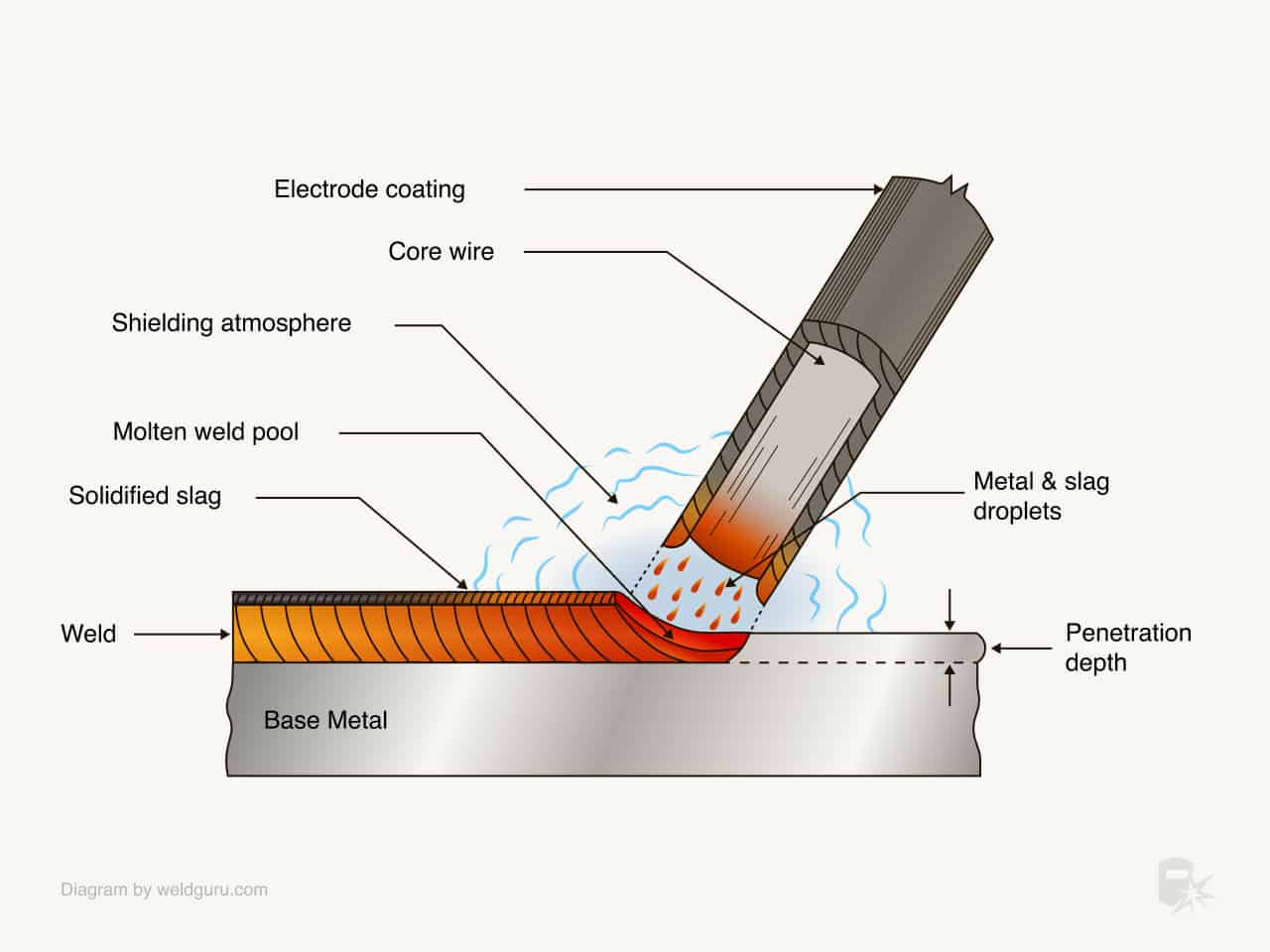
© weldguru.com – Image usage rights
Another flux function is sending alloying elements to improve the weld. Stick welding is one of the most basic, simple welding processes.
You can use it on a variety of metals, including:
- Steel
- Stainless steel
- Aluminum
- Cast iron
Stick welding is also a very versatile process. SMAW works well in all welding positions. You can bend the electrode to reach tight spots.
It welds both thick and thin materials. Though, welding thin sheets with a stick takes great skill.
Stick Welding Pros:
- Low Cost: Stick welding equipment is relatively inexpensive compared to other welding processes.
- Portability: Stick welding machines are compact, so you can use them in remote locations.
- Versatility: You can use stick welding to weld a wide range of metals, including steel, stainless steel, cast iron, and nickel alloys.
- Quality: Stick welding leaves a high-quality weld with a smooth finish. But you need a steady hand and precise control of the welding electrode.
- Deeper Penetration: Stick welding produces deep penetration. That makes it suitable for welding thicker materials.
Stick Welding Cons:
- Low Deposition Rate: Deposition refers to the rate that the electrodes deposit metal into the weld joint. SMAW takes longer to complete a weld.
- Slower Operating Speed: Stick welding slows when the welder frequently stops to change electrodes.
- Spatter: A large amount of splatter can be difficult to clean up.
- Distorting Metal: Warping and distortion happen due to heat generated by the arc, especially on thin material.
The main disadvantage of stick welding is that it’s a manual process. It takes a skilled welder to produce a quality weld. Highly-skilled welders don’t come cheap.
Understanding Flux-Cored Arc Welding (FCAW)
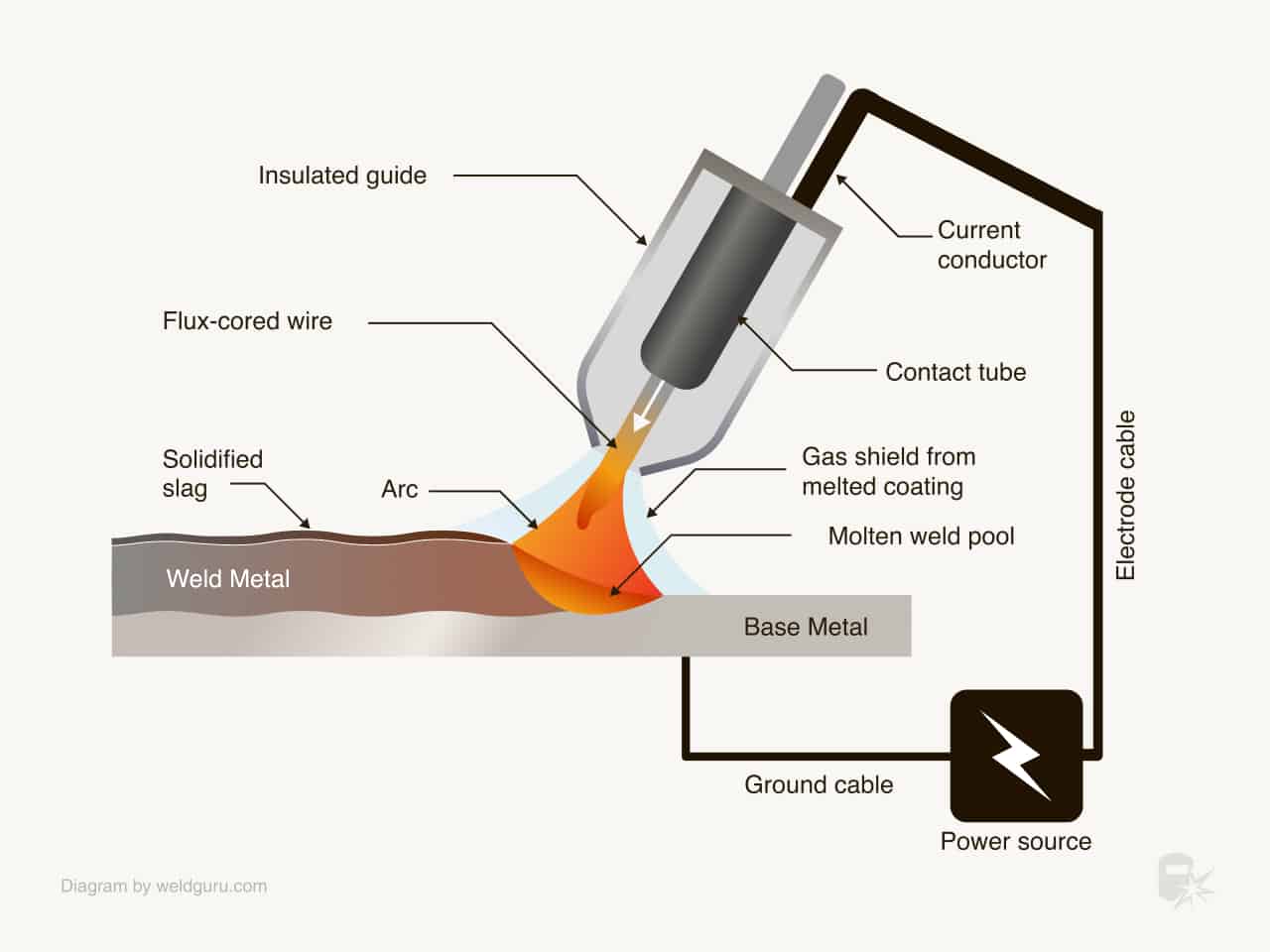
© weldguru.com – Image usage rights
Flux-cored arc welding (FCAW) is a semi-automatic welding process. It feeds a flux-filled wire electrode into the weld from a spool.
The flux helps protect the weld from environmental contamination. Alloying elements in the flux increase the strength of the weld.
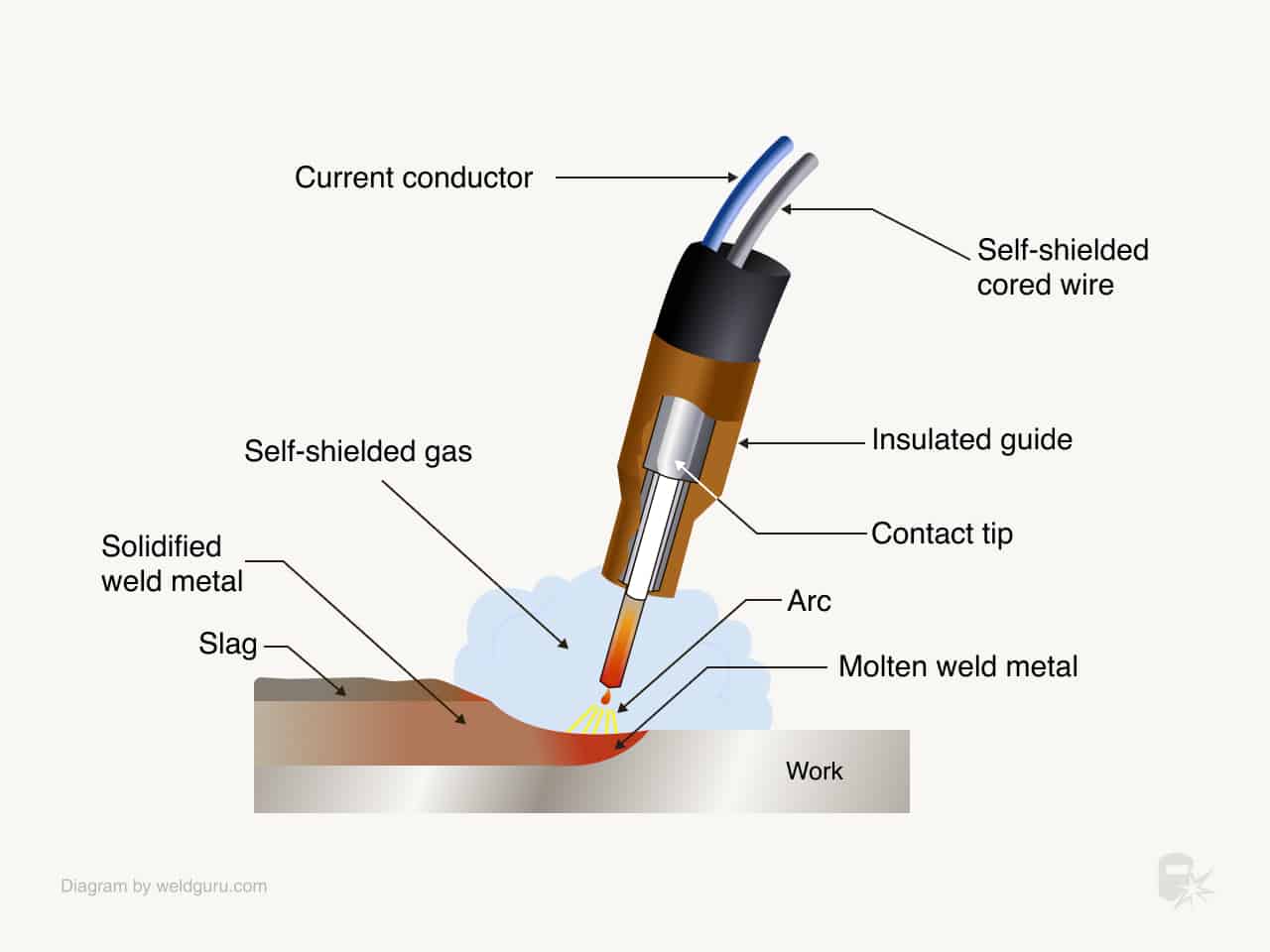
© weldguru.com – Image usage rights
Flux core makes a less refined weld than stick welding. But it’s easier to use, needing less skill to operate. It’s quite a bit faster than stick welding.
It can also be inert gas-shielded, like MIG (GMAW). These factors make it popular for manufacturing.
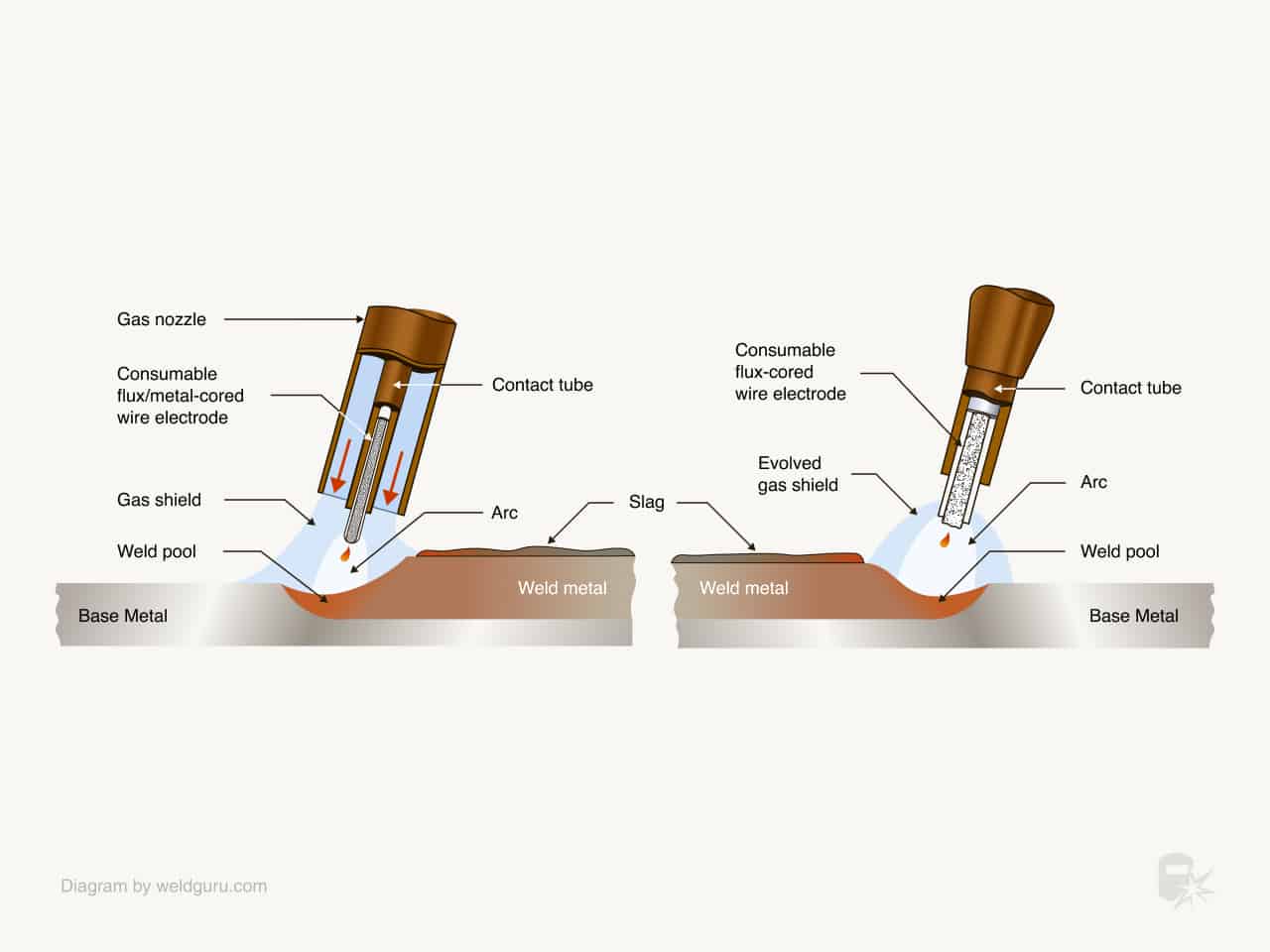
© weldguru.com – Image usage rights
All that flux powder inside serves a few purposes:
- Releases shielding gases to envelop the weld puddle
- Shields weld from contamination
- Controls the rate of metal deposition
- Flows alloying elements into the weld
Flux-Cored Welding Pros:
- Semi-Automatic Process: Wire feed means fewer stops and starts to change electrodes.
- Faster Than Stick Welding: Wire feed fills the puddle faster, increasing the deposition rate.
- Cleaner Process: Makes less spatter than SMAW.
- Adaptability: More suitable for thin materials. Heat input is more precisely controlled.
Flux-Cored Welding Cons:
- Cost: Needs more expensive equipment than stick.
- Limited Use: Not suited for welding aluminum or cast iron.
- Contamination: Flux can cause contamination with non-ferrous metals.
Key Differences Between Stick & Flux-Core Welding:
| Stick Welding (SMAW) | Flux-Core Welding (FCAW) |
|---|---|
| Consumable electrode coated in flux | Tubular wire filled with flux |
| Self-shielded | Self-shielded or gas shielded |
| Low deposition rate | High deposition rate |
| Slow operational speed | Fast operational speed |
| Deeper penetration | Deep penetration |
| Limited to certain metals | Can weld a wide range of metals |
| Difficult to control heat | Easier to control heat |
| Higher skill level required | Lower skill level required |
| Lower cost | Higher cost |
Deposition Rate
Deposition rate refers to the amount of filler added to the weld joint per unit of time. It usually comes in pounds/hour or grams/minute.
Flux-core welding offers a deposition rate up to five times higher than stick welding.
The wire feeds into the puddle at a higher rate than SMAW electrodes. That means it can produce more weld metal in less time.
This aspect makes it a faster process that’s ideal for large welding projects.
| Process | Deposition Rate (lbs./hr.) |
|---|---|
| SMAW (Stick) | 3 to 5 |
| FCAW (Flux core) | 8 to 25 |
Operating Speed
Stick welding is easier to learn than flux-core welding but harder to master. It takes less equipment. It’s more forgiving of mistakes. However, it is a slower process as you have to stop to replace a used electrode with a new one.
But if you have experience with MIG welding (GMAW), you may find flux-core welding a little easier to pick up and master.
Flux-core welding is much faster than stick welding. It has a higher deposition rate, along with a wire-feed electrode.
This speed means you can complete a welding project more quickly with flux-core welding than stick welding.
Strength & Penetration
SMAW produces a strong and deep weld. We know the electrode used in stick welding comes coated in flux.
Flux melts and creates a gas shield around the weld pool, protecting it from contamination. This process results in a high-quality weld with excellent penetration.
Flux-core welding also uses a continuously fed wire filled with flux. The weld produced by FCAW is not as strong or deep as a stick weld at the same amperage.
This disparity is because the wire used in flux-core welding is thinner than the electrode used in stick welding.
Weldable Metals
You can use both stick and flux-core welding on a variety of metals. These include, but are not limited to, carbon steel and stainless steel.
Still, there are some limitations to each method. Stick welding isn’t for thin metals.
The high heat can cause warping and distortion. Flux-core welding works poorly on non-ferrous metals like copper, aluminum, or brass.
Heat Control
Stick welding produces a lot of heat, which can be difficult to control. Welders must carefully manage the heat to prevent warping and distortion.
Spoons, heat sinks, welding tables, and clamps are your friends. The machine needs to run on the lowest current that will safely do the job. Weld in short sessions.
Flux-core welding produces less heat and is easier to control. The wire used for FCAW melts at a lower temperature than the SMAW electrode, resulting in less heat input.
Ease of Use
Most see stick welding as more difficult to master than flux-core welding. SMAW requires a steady hand and precise control of the electrode.
Flux-core welding uses a wire feed system that’s easier to control and produces a smoother weld. In the end, both processes require some good practice to master. Keep at it, and you’ll get it!
Associated Costs
The typical “tombstone” welding machine is much simpler than flux-core equipment. Stick welding also requires fewer consumables, like electrodes, than flux core welding.
You can’t weld any more simply than you can with stick welding.
Flux-core requires a more expensive welding set, with a hunger for consumables. The wire for flux-core welding is more expensive than the electrodes used in stick welding.
MIG and wire-feed welding machines cost more but deliver more features. Spool guns, wrenches, extra spools, and spare contact tips need maintenance and cost money.
You’ll need to buy a helmet, gloves, and apron or coat in either process. Don’t forget to count spare parts and tools. You’ll need a cart, toolbox, or bag and storage for rods or wire.
Applications of Stick & Flux Core Welding
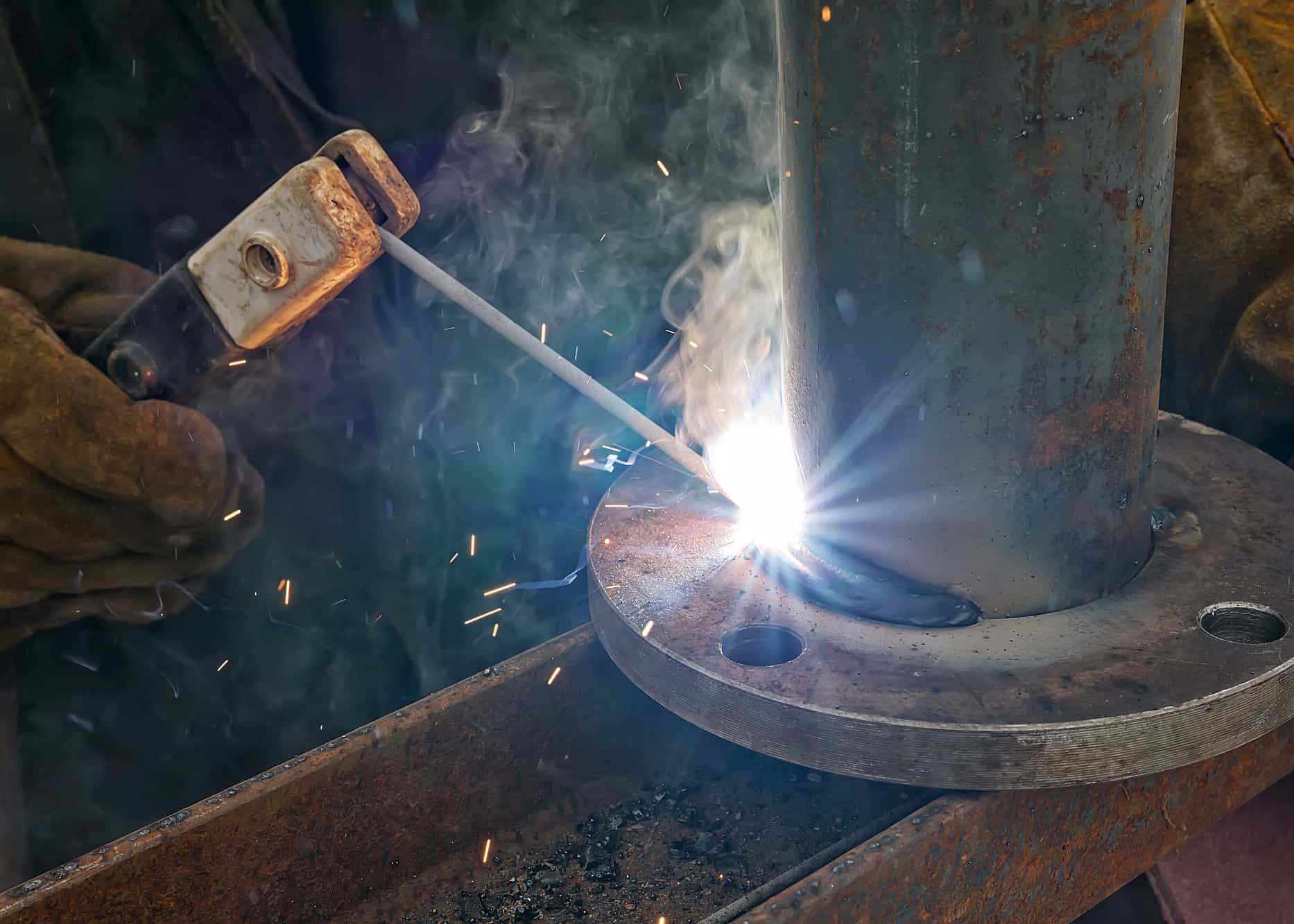
© weldguru.com – Image usage rights
Stick welding is best suited for outdoor welding, such as construction or repair work. It’s also ideal for welding thicker metals. It delivers deeper penetration than flux-core welding.
Stick welding is better for welding in tight spaces. You can bend the electrode to fit into small spots.
Flux-core welding is better suited for indoor welding projects like fabrication or manufacturing. Shipbuilding, construction, and automotive repair commonly use flux-core welding.
It’s also ideal for welding thinner metals. FCAW produces a shallower penetration than stick welding. Flux-core machines have settings that control current, feed speed, polarity, arc striking factors, and other variables.
Most stick welders don’t have the same levels of flexibility as flux-core machines.
When choosing between stick welding and flux-core welding, here are some things to keep in mind:
- Consider the thickness of the metal you will be welding. Stick welding is better for thicker metals, while flux-core welding is better for thinner metals.
- Think about the conditions where you’ll be welding. Stick welding is better for outdoor welding projects, while flux-core welding is better for indoor welding projects.
- Remember your level of experience. Stick welding takes less equipment and is more forgiving of mistakes. If you have experience with MIG welding, you may find flux-core welding to be much easier to pick up.
Stick welding is a versatile, relatively cheap, manual process. Flux-core welding is a semi-automatic process. It’s faster and more efficient. Both processes need protective equipment.
Both work on a variety of metals. It’s very important to consider the equipment cost and the welder’s skill when deciding.
So, Which One Should You Choose?
Well, it all depends on your particular project needs. Flux-core welding is the easiest way to go. Maybe you’re working with a variety of metals. If so, you need a versatile method that’s easy to learn.
Stick welding may be the better choice. However, don’t forget that SMAW is easy to learn but hard to master.
Ultimately, the decision comes down to your personal preference and the specific needs of your project. If you’re unsure which method to choose, consult with a welding professional.
They can help you determine the best method for your project and provide you with the guidance and support you need.
